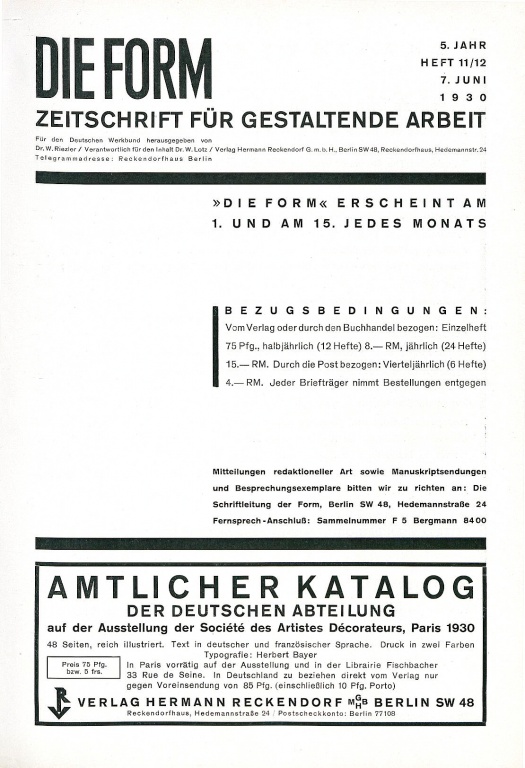Lewis Mumford: Art and Technics (1952–) [English, Greek]
Filed under book | Tags: · architecture, art, city, craft, machine, mechanics, technology

Lewis Mumford — architectural critic, theorist of technology, urbanist, cultural critic, historian, biographer, and philosopher — was the author of almost thirty books, many of which expounded his views on the perils of urban sprawl and a society obsessed with “technics.”
In these lectures delivered at Columbia University in 1951, Mumford explores “the ethical problems that drove all of his writings on art, technology and urbanism: the severing of the bonds of fellowship and community in advanced industrial society; the waning sense of a public good and the resulting moral crisis of modern life; the cultural divide separating an instrumental language of technique from the symbolic language of aesthetic experience; and the plight of ‘personality’ in a bureaucratic age.” (from the introduction to the 2000 edition)
Publisher Columbia University Press, New York, 1952
Bampton Lectures in America, 4
162 pages
Review (R. L. A., Philosophy of Science, 1953)
Art and Technics (English, 1952, removed on 2019-10-3 upon request from publisher)
Τέχνη και τεχνική (Greek, trans. Βασίλης Τομανάς, 1997)
Ulrich Conrads (ed.): Programs and Manifestoes on 20th-Century Architecture (1964/1970)
Filed under book | Tags: · architecture, art, avant-garde, bauhaus, city, constructivism, functionalism, manifesto, modernism, neoplasticism, utopia

“The present volume offers eloquent testimony that many of the master builders of this century have held passionate convictions regarding the philosophic and social basis of their art. Nearly every important development in the modern architectural movement began with the proclamation of these convictions in the form of a program or manifesto. The most influential of these are collected here in chronological order from 1903 to 1963. Taken together, they constitute a subjective history of modern architecture; compared with one another, their great diversity of style reveals in many cases the basic differences of attitude and temperament that produced a corresponding divergence in architectural style.
In point of view, the book covers the aesthetic spectrum from right to left; from programs that rigidly generate designs down to the smallest detail to revolutionary manifestoes that call for anarchy in building form and town plan. The documents, placed in context by the editor, are also international in their range: among them are the seminal and prophetic statements of Henry van de Velde, Adolf Loos, and Bruno Taut from the early years of the century; Frank Lloyd Wright’s 1910 annunciation of Organic Architecture; Gropius’s original program for the Bauhaus, founded in Weimar in 1919; “Towards a New Architecture, Guiding Principles” by Le Corbusier; the formulation by Naum Gabo and Antoine Pevsner of the basic principles of Constructivism; and articles by R. Buckminster Fuller on universal architecture and the architect as world planner. Other pronouncements, some in flamboyant style, including those of Erich Mendelsohn, Hannes Meyer, Theo van Doesburg, Oskar Schlemmer, Ludwig Mies van der Rohe, El Lissitzky, and Louis I. Kahn. There are also a number of collective or group statements, issued in the name of movements such as CIAM, De Stijl, ABC, the Situationists, and GEAM.
Since the dramatic effectiveness of the manifesto form is usually heightened by brevity and conciseness, it has been possible to reproduce most of the documents in their entirety; only a few have been excerpted.”
First published as Programme und Manifeste zur Architektur des 20. Jahrhunderts by Verlag Ullstein, Frankfurt/M and Berlin, 1964.
Translated by Michael Bullock
Publisher MIT Press, 1970
ISBN 0262530309, 9780262530309
192 pages
via carlao126
PDF (4 MB)
See also Charles Jencks, Karl Kropf (eds.), Theories and Manifestoes of Contemporary Architecture, 1997.
Comment (0)Die Form: Zeitschrift für gestaltende Arbeit (1922-1935) [German]
Filed under magazine | Tags: · advertising, architecture, art, art criticism, avant-garde, bauhaus, city, design, graphic design, industrial design, photography, typography



Die in den Jahren 1925-1934 erscheinende Zeitschrift „Die Form“ wurde von Walter Curt Behrendt für den Deutschen Werkbund herausgeben. Sie erschien im Berliner Verlag Hermann Reckendorf; ihre Auflage überschritt nie die Marke von 5.000 Exemplaren. Der Untertitel lautete von 1929 bis 1934 „Zeitschrift für gestaltende Arbeit“.
Bereits im Jahr 1922 hatte es einen ersten Versuch gegeben die Werkbund-Zeitschrift zu etablieren. So heißt es im Geleitwort des ersten Bandes (1925) von Walter Curt Behrendt „Mit dieser Zeitschrift setzt der Deutsche Werkbund ein Unternehmen fort, das bereits vor längerer Zeit begonnen, unter dem Druck der wirtschaftlichen Verhältnisse zunächst wieder aufgegeben werden mußte. Die Zeitschrift wird die Aufgaben der Formgestaltung für alle Gebiete des gewerblichen und künstlerischen Schaffens behandeln.“
Behrendt blieb bis Ende 1926 Herausgeber und wurde dann durch Walter Riezler abgelöst. Die Gestaltung der typographischen Umschläge lag in den Händen von Joost Schmidt. Er war seit 1919 am Bauhaus und leitete seit 1925 die Plastische Werkstatt. 1934/35 wurde die Zeitschrift von den Nationalsozialisten übernommen und dann eingestellt. (Source)
Publishers: Hermann Reckendorf, Munich and Berlin, 1922 & 1927-1932; Kurt Schroeder, Bonn and Berlin, 1925-1926; W. & S. Loewenthal, Berlin, 1933 (1-3); Wendt & Matthes, Berlin, 1933 (4-12), 1934 (1); Deutscher Werkbund, Berlin, 1934 (2-6); Walter de Gruyter, Berlin, 1935
via Universitätsbibliothek Heidelberg
Volumes (single PDFs) and separate articles (PDF, HTML):
Volume 1, 1922 (Die Form: Monatschrift für gestaltende Arbeit, 4 Issues)
Volume 1, 1925-1926 (15 Issues)
Volume 2, 1927 (Die Form: Monatschrift für gestaltende Arbeit, 12 Issues)
Volume 3, 1928 (Die Form: Monatschrift für gestaltende Arbeit, 15 Issues)
Volume 4, 1929 (24 Issues)
Volume 5, 1930 (24 Issues)
Volume 6, 1931 (12 Issues)
Volume 7, 1932 (12 Issues)
Volume 8, 1933 (12 Issues)
Volume 9, 1934 (6 Issues)
Volume 10, 1935 (1 Issue)

